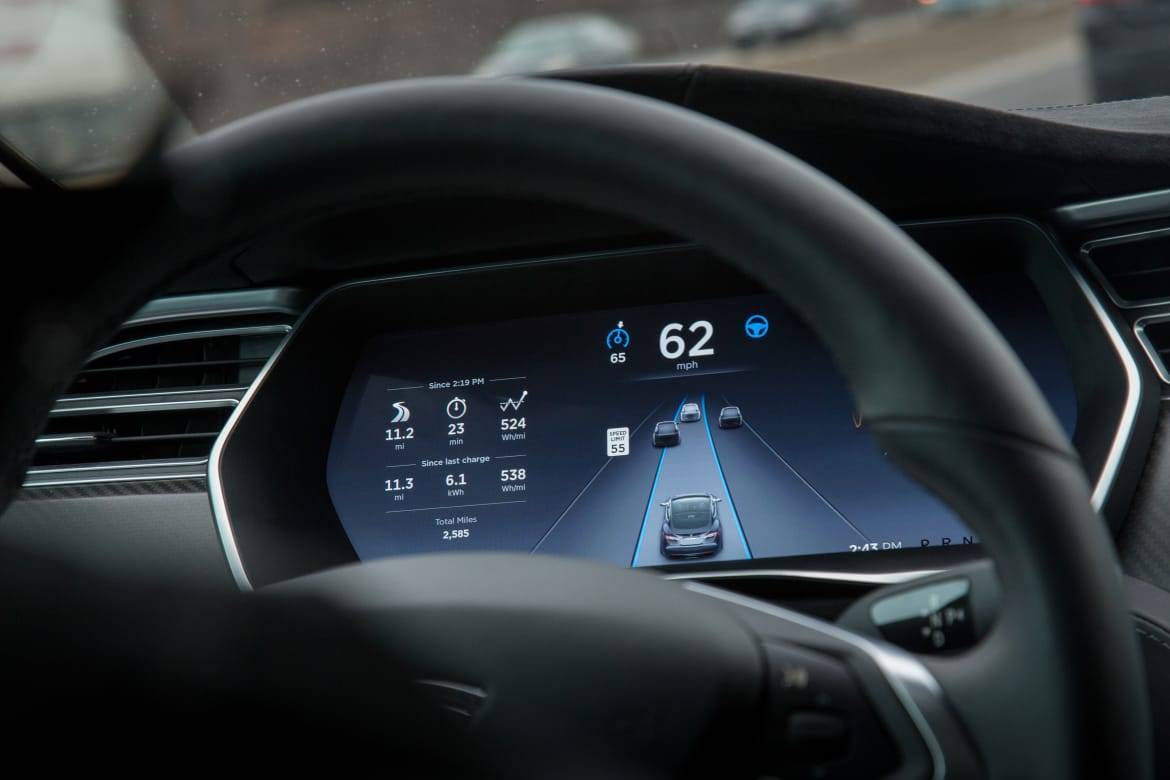Tesla Video Shows Self-Driving Future

CARS.COM — Tesla Motors is putting full self-driving capability into all its vehicles from here on out, except the hardware is going to remain dormant until further testing and clearer regulations permit its use.
It’s like ticking the option box for the best audio system in your new car or truck, then being told by the automaker that you can’t turn it on. In fact, you might have to wait years to do so.
If that leaves you scratching your head, hold on tight, because the keen minds at MIT’s Media Lab are developing vehicle software to determine who lives and dies in an accident. What happens if a self-driving car simply can’t avoid a crash and the vehicle must choose the better of two very bad options?
Your car could, theoretically, someday decide whether you live or die.
Related: More Tech News
Tesla Motors Bets Big on Self-Driving
On Oct. 19, Tesla Motors announced that its new cars would be fitted with hardware compatible with full autonomous driving. An array of new and improved cameras and sensors, along with an onboard computer said to be 40 times faster than the previous unit, allows every Model S, Model X, and upcoming Model 3 sedan to have Level 5 self-driving capability.
Why should I care? The problem is, you can’t use this driving tech — at least not for now. Additional testing and clearer regulations for using self-driving tech on public roads means that approval could be many years into the future. Tesla Motors is fitting the hardware for full self-driving operation now because, as company founder and CEO Elon Musk stated via social media, retrofitting the necessary systems would be prohibitively expensive.
This didn’t stop Tesla from releasing a video of a Model X using its Autopilot driving assist program to navigate a mixture of highway and city streets. The driver did not touch any of the controls; if you look closely, the engineer keeps his hands tucked directly under the steering wheel the entire time. Does self-drive mean having to adopt a driving pose that looks like you’re waiting to catch a punted football? Stranger still, the Rolling Stones’ “Paint It Black” is a depressingly dark choice of background music for a technology hailed as the future of mobility.
The video also stoked controversy after Germany’s transport ministry claimed that the Autopilot name itself dupes drivers into thinking they don’t have to pay attention to the road.
MIT’s Moral Machine
If a rock anthem has you feeling blue, then you might want to skip the news about MIT Media Lab’s Moral Machine. The intended goal is to gather “a human perspective on moral decisions made by machine intelligence, such as self-driving cars.” It’s a succinct way of stating that you help teach your vehicle who to kill when a bad accident is unavoidable.
Why should I care? Did you read the preceding paragraph? Your car could lob you into a cement wall to save someone crossing the street, for crying out loud. The Moral Machine platform — trust us, it’s too dark to be called a game — challenges you to decide which of two terrible scenarios is “more acceptable.” Deciding whether to careen into a barrier or hit an old lady and a puppy crossing the street can get awfully bleak by the third or fourth “scenario,” we assure you. Feeling extra creepy? You can design your very own lose-lose driving situation.
This program shows the lengths self-drive engineers must go to when developing vehicles. There will be times when a car operating in autonomous drive must decide in a split-second the better of two awful outcomes. Forget about top-speed or fuel-economy figures; in the future, your new car or truck might have to learn morality, too.
Ford and Jaguar Land Rover Cooperate on Self-Drive
Automotive News Europe reported Ford and Jaguar Land Rover are working to make any potential self-drive accidents as rare as possible thanks to an engineering partnership in the U.K. The two automakers are developing vehicles that alert each other if another connected car rapidly brakes, for example. Sensors also read and detect road signs, and even adjust the vehicle’s speed to encounter fewer red lights in city traffic. Your commute could be safer and faster thanks to this technology.
Why should I care? Automobile companies know they can’t go rogue when it comes to self-driving cars. The more test miles and bigger pool of knowledge, the better the chances of developing autonomous drive systems that create safer and potentially swifter roadways. Ford is also actively committed to a self-drive trial run of Uber taxicabs in Pittsburgh.
Featured stories




